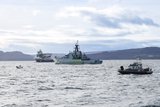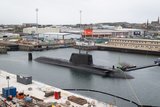Where to now in South China Sea?
Predictably, China reacted furiously to the Permanent Court of Arbitration’s (PCA) decision handed down on 12 July against its maritime claims in the South China Sea.
In its 501-page report the tribunal found Beijing violated 14 United Nations Convention on the Law of the Sea (UNCLOS) provisions, six international regulations preventing collisions at sea and one general rule of international law.
One cannot blame China for wishing to protect national interests. Indeed, the US does precisely the same by refusing to ratify UNCLOS, all the while advising China to abide by the same rules. Nevertheless, China’s besmirching of an international
Already have an account? Log in
Want to keep reading this article?
More from Naval Warfare
-
![Indo Pacific 2025: Australian Defence Force sets its sights on autonomy]()
Indo Pacific 2025: Australian Defence Force sets its sights on autonomy
Multiple autonomous systems and technologies were on display at this year’s Indo Pacific, but questions remain over how the Australian Department of Defence will balance the books.
-
![How the UK Royal Navy is powering up its hybrid fleet to combat new threats]()
How the UK Royal Navy is powering up its hybrid fleet to combat new threats
Since it announced its move towards a new “hybrid navy” earlier this year, the force has announced a number of new uncrewed technologies in the works.
-
![US and UK to begin Trident II D5 Increment 8 in October 2026]()
US and UK to begin Trident II D5 Increment 8 in October 2026
Trident II D5 Increment 8 will involve improvements to the shipboard navigation subsystem for the US Ohio and Columbia and the UK Dreadnought and Vanguard submarine classes.
-
![US Navy starts acquisition process for uncrewed maritime systems for support missions]()
US Navy starts acquisition process for uncrewed maritime systems for support missions
The USN is interested in uncrewed capabilities that can carry out explosive ordnance disposal, mine countermeasures, force protection, ISR and anti-submarine missions.
-
![HMS Agamemnon: details of the dive and what the Astute-class signifies for the UK Royal Navy]()
HMS Agamemnon: details of the dive and what the Astute-class signifies for the UK Royal Navy
As HMS Agamemnon moves closer towards joining the UK’s in-service submarine fleet, how does the sixth Astute-class fit into the Royal Navy’s defence strategy?






















